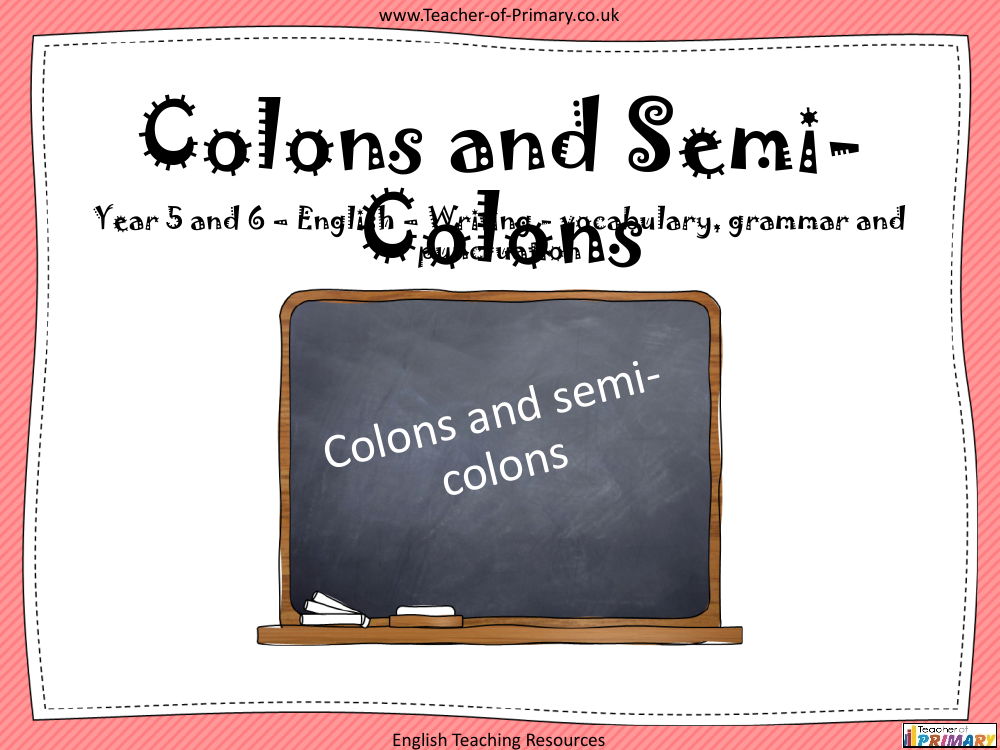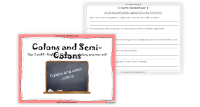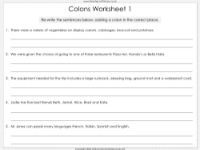Colons and Semi-Colons - PowerPoint

English Resource Description
An English teaching resource for Year 5 and 6 students focuses on the proper use of colons and semi-colons in writing. The objective of the lesson is to help students understand how to correctly incorporate these punctuation marks into their sentences. The resource explains that a colon, represented by the symbol ":", has three primary functions: introducing a list, separating clauses within a sentence, and presenting a quotation or direct speech. The lesson, however, concentrates on the first two uses—introducing lists and separating clauses. Students are shown examples such as "For my birthday I got: a bike, a Playstation 4 game, a DVD and a new pair of trainers," demonstrating how a colon introduces a list. They are then given sentences to rewrite, inserting colons in the correct places to practice this skill.
The teaching resource also covers the use of semi-colons, denoted by ";", which have two main functions: replacing commas in complex lists and joining two complete sentences that are closely related. An example given is "During my European travels I visited many cities: Paris, France; Barcelona, Spain; Lisbon, Portugal and Venice, Italy," illustrating how semi-colons can clarify lists that contain internal commas. Additionally, semi-colons can be used to connect related sentences, as in "Sarah has bought a new car; she loves it." This use of the semi-colon links the sentences more closely than a full stop would. Worksheets are provided for students to practice rewriting sentences, adding semi-colons where necessary to enhance their understanding of this punctuation mark.


